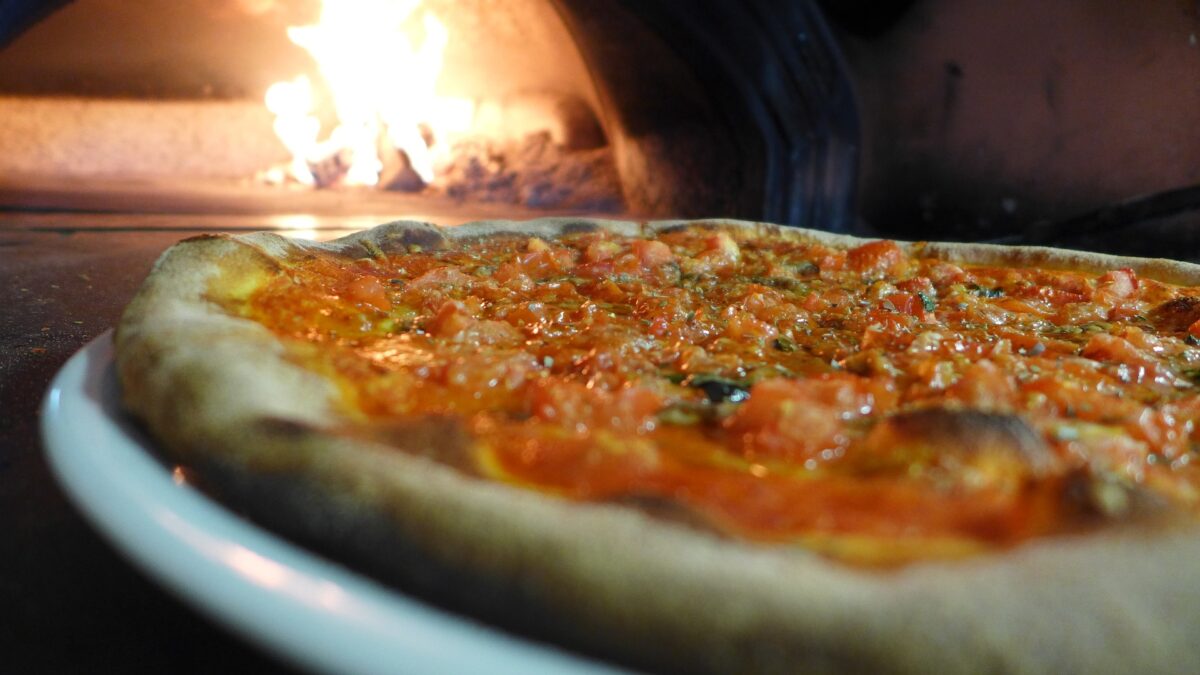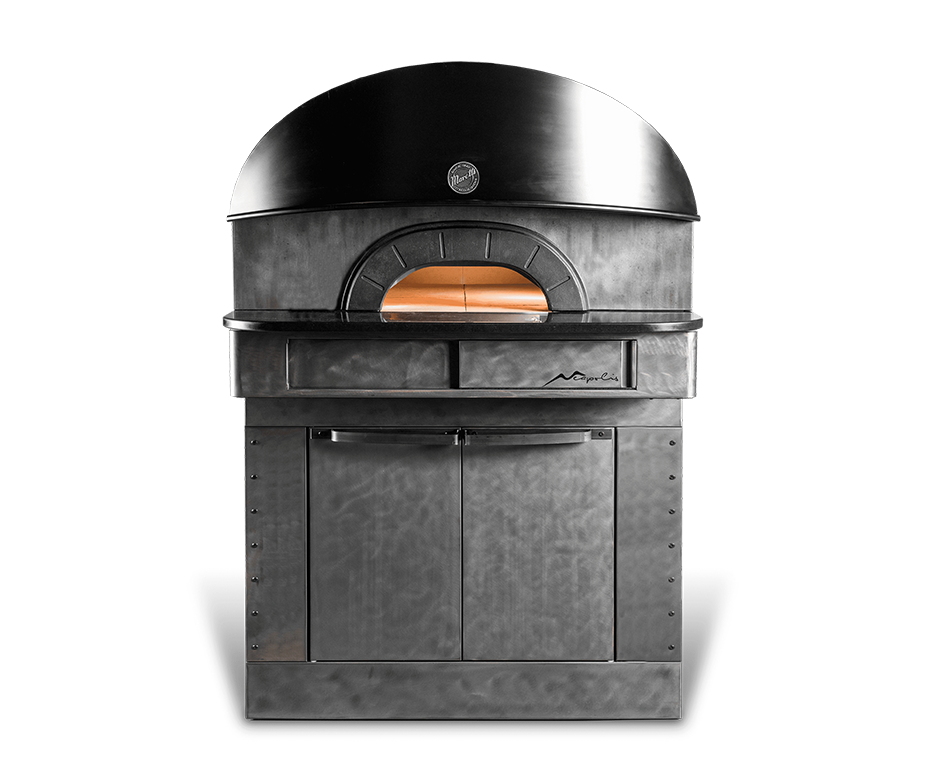
What’s the best kind of commercial pizza oven? Should you choose the old fashioned wood fired pizza oven? Or is it better to give a modern electric one a go?
The history of ovens started several millennia ago. The first stone ovens known date back to the age of ancient Egypt, and the Greeks introduced major innovations during the V century B.C. Since then, they have gone through a long evolution process, becoming today a must have in our homes.
In Italy, and especially in Naples, the tradition is clear and blunt. The only proper way to bake a delicious pizza must be with the classic, timeless, wood-fired oven!
But as professionals in the food industry, we must ask ourselves the profane question.
Is it really true? Are wood-fired ovens actually that superior to the electric ones? Are them therefore so irreplaceable?
Let’s put aside the prejudices once and for all, and let’s focus on facts.
Wood fired pizza oven and electric oven: how do they work?
A wood-fired oven is the traditional type of oven powered by burning wood, that is usually recognized to be the most effective one to bake pizza. It is typically made of brick or stone and has an opening at the front for loading the wood. The fire is lit inside and the heat radiates from the walls, floor, and ceiling.
Its heating process combines three different modes of heat transfer.
a) Convection
The fire generates the hot air, which flows through the oven.
b) Conduction
The floor plate releases the heat into the food.
c) Radiation
The heat is reflected off the oven floor and radiates into the food.
The electric oven, on the other hand, is a type of oven that is powered by electricity. It typically has a heating element that generates heat and that allows you to adjust the temperature by controlling the amount of electricity that is supplied into it.
Being these heating processes so different, they both surely have some pros and cons.
Let’s now analyze them in depth in order to make an honest, unbiased, comparison.
Temperature and baking quality
One of the secrets for a perfect, delicious pizza is baking it at a very high temperature. Usually, the ideal heat recommended is between 400°C and 450°C (750-850°F). Above that, it burns; below that, pizza’s quality decreases.
By keeping the oven around its ideal baking heat, the pizza will have a crunchy crust. Also, the high baking speed allows the ingredients to preserve their nutritional values and features.
Temperature is indeed the main advantage that is usually attributed to wood ovens. A well performing wood-fired oven can reach temperatures as high as almost 1000°C. By the way, you’ll just need 400-500°C to bake a pizza in only 90 seconds.
By contrast, most of the regular electric ovens reach up to 350°. Such a slower baking temperature usually means a softer dough, and longer baking times (up to 5 minutes).
But before proclaiming a winner, let’s focus on reality!
Despite the fact that everything we said so far was pretty accurate until some time ago, today we have more advanced electric ovens that are perfectly able to reach higher temperatures.
It’s the case of the new Moretti Forni’s technological masterpieces such as the new Neapolis. Neapolis can reach 510°C (over 900°F), making it the fastest and hotter electric oven in the world and allowing you to bake pizzas at their ideal baking temperature exactly as a wood-fired one.
As Italians, at MODALiTA we decided to bring those incredible ovens to the US because they combine all the electric oven’s advantages to the same ideal baking heat of a wood-fired oven.
Flavor and taste
The second advantage usually attributed to the wood-fired ovens is the flavor that the wood baking traditionally gives to the pizzas.
The hot air and the smoke that flows throughout the oven gives the pizza a typical smoky flavor. You can’t find this kind of aroma in an electrically baked pizza. Moreover, any different kind of wood gives its own scent to the pizza, allowing the pizzaiolo to play with the flavors.
One of the major disadvantages though is that the smoke releases a small amount of black carbon. This one is a nanometric particle that becomes carcinogenic in huge amounts.
Besides, flavor also depends on the flour used to make the dough. The classic ultra refined 00 flour is tasteless, and therefore the smoky wood oven’s aroma compensates its lack of flavor. But if you use different kinds of flour, such as stone-ground semi wholemeal flour that already has a strong aroma, the outcome is gonna be perfect even with an electric oven.
…or maybe better, because you won’t need to cover it with another smoky wood aroma.
Efficiency and profitability
As you may have already guessed, a higher temperature means quicker baking. Clearly, quicker baking means you can bake a higher amount of pizzas in the same span of time.
Which obviously means faster serving time for your customers and higher profits for your restaurant.
If we compare a wood oven with a standard electric one, the wood oven can bake a pizza as fast as in 90 seconds, against the usual 5 minutes of an electric one. But if the electric oven you’re using is a top notch Moretti’s oven, the baking time becomes the same as the wood oven.
Moreover, the wood-fired oven has an issue. Due to its baking process, every time you bake a pizza its floor’s baking spot cools down, and it takes some time to reheat again properly. As a consequence, you have to bake the other pizzas in different corners of the oven if you don’t want to have their bottoms undercooked.
The electric one, by contrast, always keeps its temperature even and steady. Besides that, good commercial ovens often have multiple chambers, allowing you baking up to three times the amount of pizzas you can bake at the same time in a wood oven.
Convenience and maintenance
What about the overall convenience?
From this point of view, there’s no match.
Regarding wood-fired ovens, you need to clean them up very frequently to remove black carbon stains and dust. Moreover, you always need more wood to sustain the heat, and you must always pay attention to the quality of that wood, because it may alter the flavors.
This means storage, transportation, etc. It also takes time to raise the heat at the beginning of the day and to keep it controlled during an entire session. Usually the first and last pizzas come out worse, because the heat is unstable.
On the contrary, electric pizza ovens require just 20 minutes to reach the necessary heat level, you just need to turn on the electricity.
Cleaning it up is very easy and straightforward as well.
Costs and energy
Regarding costs and consumption, they seem to be pretty much comparable.
Electric ovens need continuous electrical power of course; however, wood-fired ovens always require wood to work. Given both kinds of fuel costs, we may say it’s 50-50.
By the way, we must also mention the fact that a wood-fired oven is a much heavier investment in the first place. You’ll need space and a brick structure, together with an exhaust system to clean frequently, and fans, filters, etc…
Therefore, at the end of the day, a top class electric oven helps you save money and effort when you start your own new pizza business.
Conclusion: Wood-fired or electric? What commercial pizza oven should you buy?
As we have seen, both wood pizza oven and electric oven have some pros and cons.
Wood-fired ovens represent an entire historical culinary tradition. They grant high temperatures and the burning wood gives a particular smoky aroma.
On the other hand, electric ovens are easier to install, easier to maintain and clean, and overall superior in terms of efficiency. Moreover, Moretti Forni’s top class ovens today can match and possibly outmatch wood-fired ones also in terms of flavors, baking quality and speed.
The final decision will always remain up to you, but at MODALiTA we are ready to help you make up your mind by evaluating all the options.
We can suggest and deliver you the most advanced and performing ovens for your specific needs, and we will assist you before and after your purchase.
Don’t make costly mistakes: contact us now, get some useful advice and our best quote!

